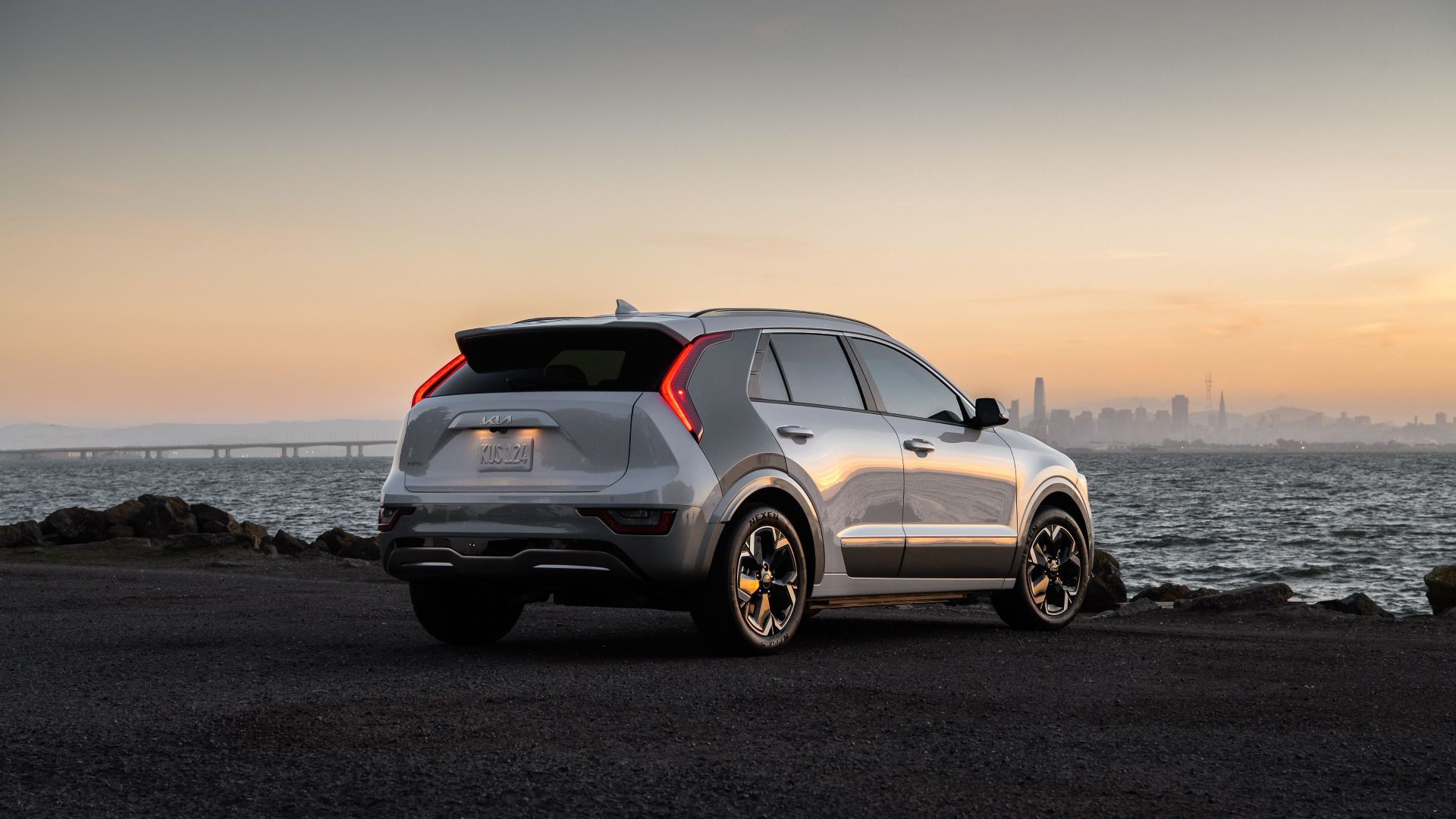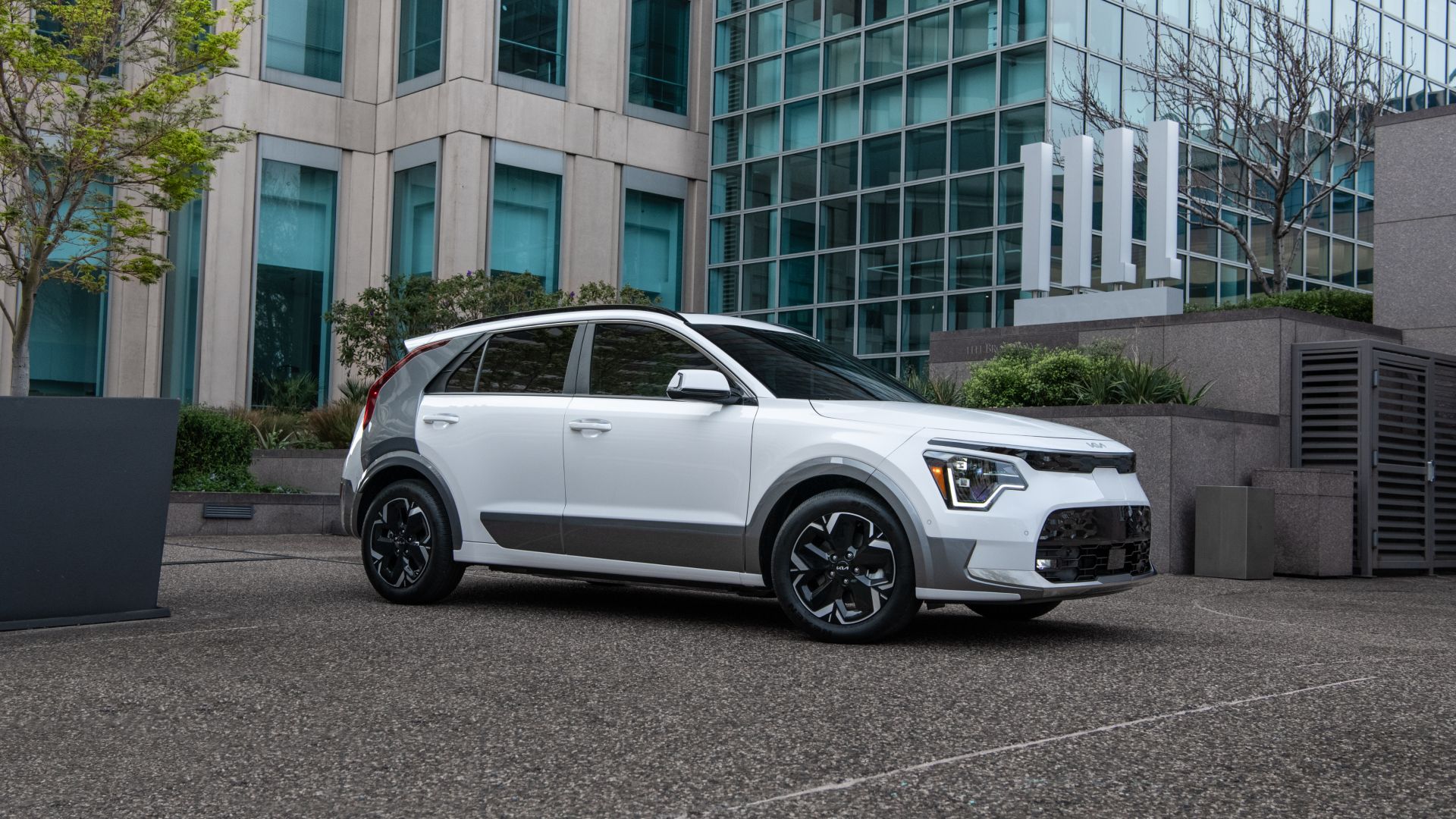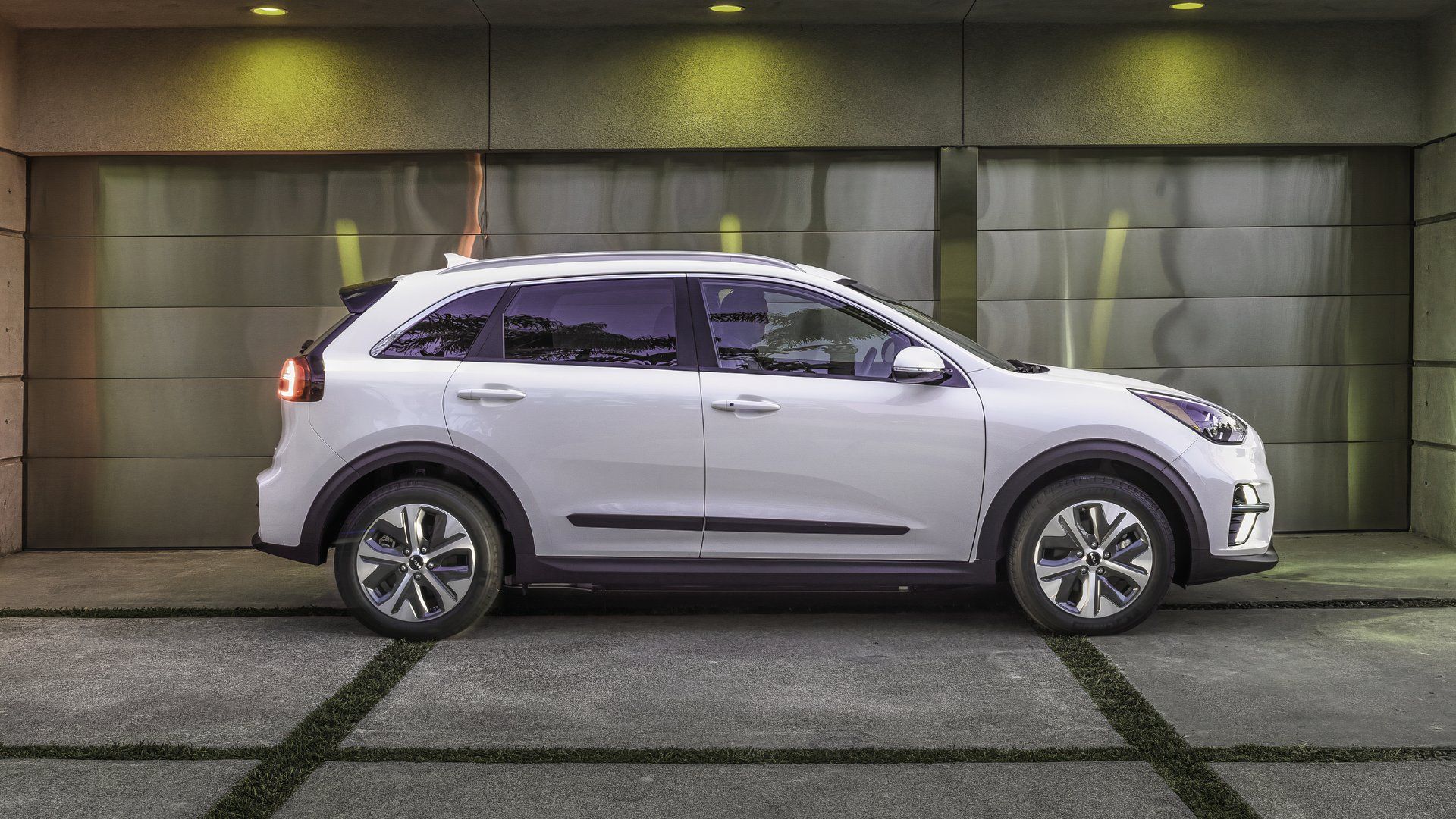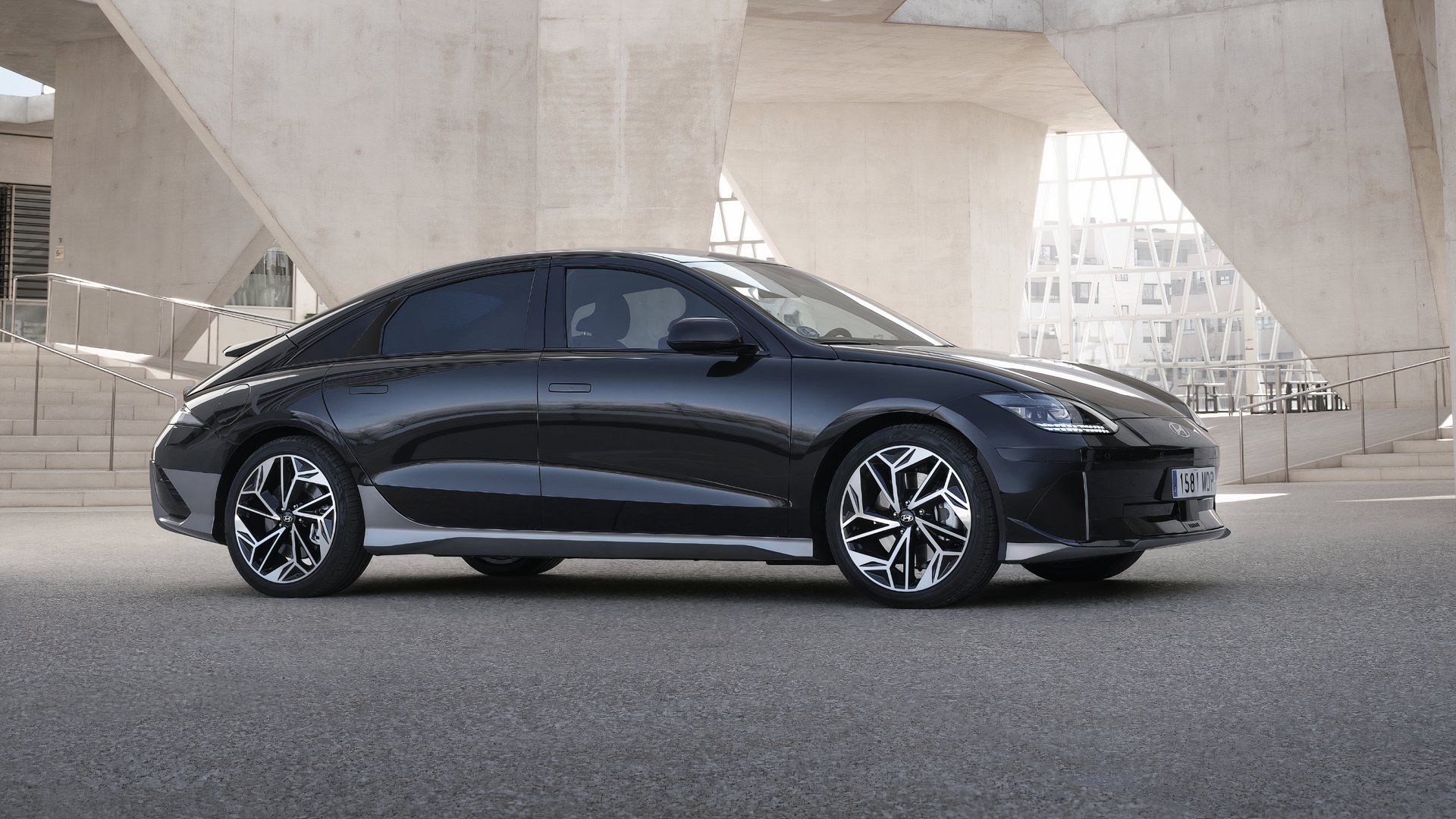Shopping for a car in 2025 can be an enjoyable task with the vast options there are. That may sound a bit dumb, with every year over the last 30-plus years being the same case. This is true, but if you’re shopping for an electric vehicle (EV), you’ll be happy to know that this is the best year yet to buy one. There a many reasons why buying an EV in 2025 is the way to go, but wrapping back to the original claim, there are so many options, and they all seem like steals.
When you divide electric vehicles by regions, you’ll see that many countries or areas do it differently from the rest of the playing field. American EVs have been on the rise in popularity, with Tesla, Rivian, and many others showcasing their unique features. When it comes to Korean EVs, there are two main players: Hyundai and Kia. There isn’t an overall winner or brand that you should pick from. Based on both lineups, Hyundai seems to have the edge over Kia regarding innovation, engineering, design, and technology. Still, that doesn’t mean you should write Kia off when browsing the EV market, because there is one electric SUV from their lineup that you should check out.
In order to give you the most up-to-date and accurate information possible, the data used to compile this article was sourced from Kia and Hyundai, along with other authoritative sources, including iSeeCars and the EPA.

Related
Why The Kia Niro EV Is An Underrated Electric Compact SUV
With its practicality, good price and highly capacitive battery, the Kia Niro EV packs a considerable punch in the compact SUV world
The Kia Niro EV Is One Of The Most Affordable Korean EVs
The Kia Niro Electric pulls in enticing prices and is Kia’s most affordable EV. It’s one of Kia’s more modest designs, with its sibling, the EV6, being the more sporty EV in the lineup. There isn’t anything wrong with being modest and simple because the Niro Electric centers around practicality. It seems like many automotive brands are shifting their lineup to futuristic or minimalist designs, and this is the case for Kia. The Niro Electric is just one example of iconic looks seen throughout the electric automotive industry.
The Kia Niro EV Starts At $39,600
Speaking of simplicity, Kia keeps things simple when picking up the Niro Electric because it only comes in two trims. Both options stay within affordable pricing, with the base model, the Wind, carrying an MSRP of $39,600. This trim will house all of Kia’s standard features, while the higher trim, the Wave, will build off the base and add some additional features. The second trim on the Kia Niro EV raises the price tag to $44,600. These may seem like steep prices, with both sticking within the $40,000 range, but it isn’t as bad as you may think. The average price for an electric SUV is $59,994, nearly $20,000 higher than the starting trim on the Niro Electric.
A Breakdown Of The Niro EV’s Performance And Efficiency
One of the most important factors that can make or break a deal on an EV or any car is its motor setup and efficiency. The 2025 Kia Niro Electric isn’t going to be the most thrilling electric SUV in performance, and as stated above, the EV6 has that department covered by beating Ferraris at half the cost. Not everyone is aiming for a fast car; if that’s the case for you, the Niro Electric is as practical as it gets. This electric SUV is powered by a single electric motor, generating 201 horsepower and 188 pound-feet of torque. Lastly, the Kia Niro Electric is only available in front-wheel drive.
2025 Kia Niro Electric Specifications
|
Motor Setup |
Single-Electric Motor |
|
Horsepower |
201 HP |
|
Torque |
188 LB-FT |
|
Transmission |
Single-Speed |
|
Driveline |
Front-Wheel Drive |
|
Battery Capacity |
64.8-kWh |
|
DC Fast Charging |
43 Minutes (10-80%) |
|
Fuel Economy (City) |
126 MPGe |
|
Fuel Economy (Highway) |
101 MPGe |
|
Fuel Economy (Combined) |
113 MPGe |
|
Range |
253 Miles |
|
kWh/100 Miles |
30 kWh/100 Mi |
While the Niro EV won’t launch from 0-60 in four seconds, it makes up for it with its efficiency. The 2025 Niro Electric provides 126 MPGe in the city, 101 MPGe on the highway, and a combined fuel economy of 113 MPGe. Its driving range is also practical, not being too little or too much, which funny enough, is there such a thing as too much range when discussing electric vehicles? A question for another time, but the 2025 Kia Niro EV tops out at 253 miles. While using a DC Fast Charger, it will take 43 minutes to recharge it from 10 to 80 percent.

Related
2024 Kia Niro EV Charging Costs And Range Explained
The Kia Niro EV’s affordable charging rates makes it a viable option for first-time electric car owners.
Kia Interior That Delivers Comfort And Convenience
In the electric automobile industry, you’ll typically see one of three interior designs on a vehicle. You have futuristic luxury designs seen on Mercedes, you have lackluster or dull interior cabins seen on models like the Nissan Leaf, and lastly, you’ll see many boasting a simple, modest, and minimalist design. These interiors are seen on a wide array of cars, such as Teslas, Volvos, Kia, Hyundai, and more. A good comparison to these cabins, which are seen on the Niro Electric, is a sterile environment with minimal features clashing with one another. As you’ve probably realized early on, the Niro EV carries themes centered around practicality and simplicity.
2025 Kia Niro Electric Interior Dimensions
|
Headroom (Front) |
40.5 In. |
|
Headroom (Rear) |
38.1 In. |
|
Legroom (Front) |
41.5 In. |
|
Legroom (Rear) |
36.9 In. |
|
Passenger Volume |
99.7 Cu. Ft. |
|
Interior Volume |
122.5 Cu. Ft. |
|
Cargo Volume |
22.8 Cu. Ft. |
|
Maximum Cargo Capacity |
63.7 Cu. Ft. |
Without jumping straight into the interior features of the Kia Niro Electric, it’s worth looking at its interior space first. It’s not on the list of the most roomy electric SUVs, but Kia does a great job by making it feel spacious and accommodating; after all, the Niro EV is classified as a subcompact crossover electric SUV. The passengers receive 40.5 inches of headroom in the front and 38.1 inches in the rear. The leg space won’t cause passengers to be cramped either, offering 41.5 inches in the front row and 36.9 inches in the second row.
All in all, the 2025 Kia Niro EV carries a passenger volume of 99.7 cubic feet and an interior volume of 122.5 cubic feet. Diving into the cargo, the Niro Electric provides an impressive amount of storage space, coming out to 22.8 cubic feet in the trunk and a maximum cargo capacity of 63.7 cubic feet.
Each Trim Houses Excellent Standard Features
Taking a look at some of the standard features on the 2025 Kia Niro Electric, it’s best to start with the base trim. In terms of convenience, the Niro EV Wind comes standard with power-adjustable and heated side mirrors, dual-zone climate control, heated front seats, heated windshield, and SynTex Cloth upholstery seating. That’s just the surface, and it offers plenty of other standard features. For the Niro Electric Wave, this is the trim for those who want added comfort, technology, and convenience. Some noteworthy features include auto-dimming rearview mirror, power-folding mirrors, front ventilated seating, heated steering wheel, powered sunroof, and perforated SynTex seat trim.
Equipped With The Latest Tech
Electric vehicles house some of the most innovative technology on the market and set high standards for all models. Kia has you covered with technology on the Niro EV, with the first feature being the standard 10.25-inch navigational touchscreen display. This system comes standard with Android Auto, Apple CarPlay, and wireless Bluetooth connectivity. A 10.25-inch instrument display for the driver is connected to the multimedia system, creating a large display unit on the front dash.
The base model utilizes a six-speaker audio system, which can be upgraded to the eight-speaker Harmon Kardon Premium Sound System on the higher trim. One of the best tech features of the Niro EV is the assortment of driving aids. These systems cover convenience and safety; both trims house many, but the Wave comes with a larger variety.
Kia Drive Wise Technologies
- Blind-Spot Collision Warning w/ Parallel Exit
- Blind-Spot-Collision Avoidance Assist w/ Parallel Exit
- Forward Collision Avoidance Assist w/ Pedestrian Cyclist And Junction Turning Detection
- Rear Cross-Traffic Collision Avoidance Assist
- Park Distance Warning Front And Rear
- Parking Collision Avoidance Assist Reverse
- Lane Departure Warning
- Highway Driving Assist 1 Or 2
- Rear Occupant Alert

Related
Why This 3-Year-Old EV Beats Most Brand-New Cars In Reliability
This South Korean EV was the most reliable EV of 2022 and the second most reliable car overall.
How The Kia Niro Stacks Up Against Hyundai
This entire time, the Niro Electric was another affordable option if you were trying to explore options outside a Hyundai EV. It is still worth taking a look at Hyundai’s three main EVs and seeing how they stack up against the Niro EV. It should be noted that Hyundai is one of the leading players in the electric automobile industry and does very well in terms of design, performance, technology, and efficiency. Hyundai won’t make it easy for Kia, but you may be surprised to find out that the two Korean car brands may be related to one another in some way.
2025 Kia Niro Electric Versus Hyundai EVs
|
2025 Kia Niro Electric |
2025 Hyundai Kona Electric |
2025 Hyundai Ioniq 5 |
2025 Hyundai Ioniq 6 |
|
|
Motor Setup |
Single-Electric Motor |
Single-Electric Motor |
Single- Or- Dual-Electric Motors |
Single- Or- Dual-Electric Motors |
|
Horsepower |
201 HP |
133-201 HP |
168 HP – Standard Range 225 HP – RWD 320 HP – AWD |
149 HP – Standard Range 225 HP – RWD 320 HP – AWD |
|
Torque |
188 LB-FT |
188 LB-FT |
258 LB-FT Standard Range and RWD 446 LB-FT – AWD |
258 LB-FT – Standard Range and RWD 446 LB-FT – AWD |
|
Transmission |
Single-Speed |
Single-Speed |
Single-Speed |
Single-Speed |
|
Driveline |
Front-Wheel Drive |
Front-Wheel Drive |
Rear- Or- All-Wheel Drive |
Rear- Or- All-Wheel Drive |
|
Battery Capacity |
64.8-kWh |
48.6-64.8-kWh |
63.0-84.0-kWh |
53.0-77.4-kWh |
|
DC Fast Charging |
43 Minutes (10-80%) |
43 Minutes (10-80%) |
20 Minutes (10-80%) |
18 Minutes (Up To 80%) |
|
Fuel Economy (Combined) |
113 MPGe |
103-118 MPGe |
94-115 MPGe |
103-135 MPGe |
|
Range |
253 Miles |
200-261 Miles |
245-318 Miles |
240-342 Miles |
|
Price |
$39,600-$44,600 |
$32,975-$41,150 |
$42,600-$54,300 |
$37,850-$51,100 |
Hyundai Kona Electric
The first Hyundai EV that’s up for evaluation is the 2025 Kona Electric. You may be surprised, but the Kona EV is nearly identical to the Niro EV in terms of performance since Hyundai provided Kia with their motor setup and batteries. This isn’t the first time Hyundai has lent a hand to Kia, with other examples including the Kia Sorento Hybrid sharing the same hybrid setup as the Hyundai Santa Fe Hybrid. The main difference is that the Kona EV is offered with a standard range trim, which also carries a more affordable price tag of $32,975. Since Hyundai engineered the setup, it’s no surprise that the Kona EV comes out on top in terms of efficiency and range.
Hyundai Ioniq 5
The Ioniq 5 is up next, and this electric SUV is practically all you could ask for. It stays at an affordable price range, carrying an MSRP of $42,600 to $54,300. Hyundai offers a standard range trim, single electric motor trim, and a dual electric motor trim on the Ioniq 5. Depending on the setup, the Ioniq 5 can provide you with an adequate amount of performance along with an impressive fuel economy and range. Ironically enough, the Kia EV6 is another model that utilizes an assortment of Hyundai parts. This shouldn’t be seen as a bad thing because it just means that both models are more likely to succeed, since it’s apparent that Hyundai is a great brand to buy electric motor setups and mechanical systems from.
Hyundai Ioniq 6
The Ioniq 6 is the last electric vehicle to be compared to the Kia Niro EV, and it mirrors the Ioniq 5 almost to the T. Hyundai offers the same motor setups, producing the same amount of power. The Ioniq 6 provides the most range out of the other models, with 240 to 342 miles. While the Kona EV was the most affordable of the four, the Ioniq 6 doesn’t stray too far, with Hyundai listing it at $37,850 to $51,100. In terms of features and technology on all four models, Hyundai seems to do better with all three of their EVs, but that doesn’t mean that the Kia Niro EV doesn’t house stunning features; it just means one did it better, but both did it great.

Related
Why This 2025 EV Is A Smart Purchase For Cost-Conscious Buyers
From quirky looks to impressive bells and whistles, this EV has it all. The bonus is that it comes with an affordable price tag.
The Niro EV Is A Solid Electric SUV To Pick Up In 2025
Sometimes, comparing a car to its competition may make it seem like it’s not a worthy buy. Hyundai is indeed dominating the electric automotive industry, nailing almost every category, but Kia is still relevant within the EV world. It doesn’t look like Kia is leaving the electric automotive industry anytime soon and that’s for good reason. The Niro Electric is one electric SUV that’s worth buying, and with the success of its larger siblings, such as the EV6 and EV9, it makes it to where you can put your trust in the Kia and the Niro EV. If you’re looking for a practical electric SUV that gets the job done, the Niro Electric is a strong candidate to take a look at.













